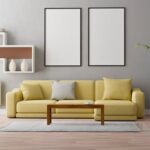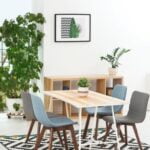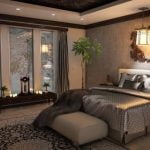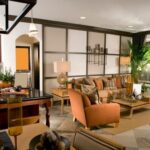What’s the next home decor trend? As the world of interior design continues to evolve, it’s important to stay ahead of the curve and explore the latest and upcoming trends in home decor. From sustainable and eco-friendly design to the rise of biophilic elements, there are many exciting developments shaping the way we decorate our homes.
In this article, we’ll delve into the diverse world of home decor trends, from minimalism and artisanal pieces to bold colors and functional design. Join us as we explore the ever-evolving landscape of interior design and discover what’s next in home decor.
In recent years, there has been a significant shift towards sustainable and eco-friendly home decor. More and more people are seeking ways to incorporate environmentally conscious design elements into their living spaces. From using natural materials to embracing energy-efficient lighting solutions, there are numerous ways to create a stylish yet sustainable home environment. We’ll provide insights on how you can integrate eco-friendly elements into your decor without compromising on style or functionality.
Another emerging trend is biophilic design, which focuses on bringing the natural world indoors. By incorporating plants, organic shapes, and natural materials into your home decor, you can create a tranquil and harmonious space that promotes well-being and connection with nature. We’ll discuss the principles of biophilic design and provide tips on how to seamlessly infuse these elements into your own living space for a refreshing and rejuvenating ambiance.
As we navigate through these changing trends in home decor, it’s crucial to understand how they complement each other. Whether it’s incorporating vintage pieces into a minimalist setting or adding bold colors to an eco-friendly space, finding a balance between different styles is key. Throughout this article, we’ll explore various approaches to blending different trends harmoniously while maintaining a cohesive and visually appealing decor scheme.
The Rise of Sustainable and Eco-Friendly Home Decor
As we look ahead to what’s the next home decor trend, it’s clear that sustainability and eco-conscious design are taking center stage. More and more homeowners are seeking ways to incorporate environmentally friendly elements into their living spaces, not only for the benefit of the planet but also for a healthier and more natural way of living.
If you’re looking to embrace sustainable home decor, here are a few ways to integrate eco-friendly design elements into your space:
- Opt for furniture made from reclaimed or sustainably sourced materials
- Incorporate energy-efficient lighting solutions such as LED fixtures
- Introduce indoor plants for improved air quality and a touch of nature indoors
- Choose organic textiles and materials for upholstery, bedding, and window treatments
In addition to making sustainable choices in furniture and materials, biophilic design has become increasingly popular in the world of interior decor. This approach emphasizes the connection between humans and the natural world by incorporating elements such as natural light, greenery, and organic shapes into living spaces. By embracing biophilic design principles, homeowners can create environments that promote well-being and harmony with nature.
In today’s fast-paced world, many individuals are finding solace in minimalist design concepts that offer clean lines, uncluttered spaces, and a focus on functionality. Maximizing minimalism is not just about paring down possessions; it’s about creating calm and serene surroundings that allow for a sense of peace and order.
To achieve this aesthetic in your home, consider decluttering your space, opting for neutral color palettes, and investing in multi-functional furniture pieces that serve both practical and aesthetic purposes.
Biophilic Design
In today’s ever-evolving world of home decor trends, one question that often lingers in the minds of homeowners and design enthusiasts is, “what’s the next home decor trend?” With a growing emphasis on sustainability and environmental consciousness, biophilic design has been gaining traction as a prominent trend in interior design. This approach aims to bring the natural world indoors by integrating plants, natural materials, and organic shapes into living spaces.
One of the key elements of biophilic design is the incorporation of plants within interior spaces. Not only do plants add a touch of greenery and visual interest to a room, but they also have numerous health benefits. Research has shown that indoor plants can help improve air quality by removing toxins and increasing oxygen levels. Additionally, being surrounded by nature has been proven to reduce stress and promote overall well-being.
Aside from incorporating greenery, biophilic design also emphasizes the use of natural materials such as wood, stone, and rattan to create a sense of warmth and connection to the outdoors. These materials not only add texture and visual appeal to a space but also contribute to a more sustainable approach to design. Furthermore, organic shapes inspired by nature can be seen in furniture and decor pieces as part of this trend.
This growing interest in biophilic design reflects a shift towards creating harmonious living environments that prioritize wellness and connection to nature. As individuals continue to seek ways to bring balance into their homes, it’s clear that embracing the natural world through biophilic design will play an integral role in shaping the future of home decor trends.
| Aspect | Importance |
|---|---|
| Incorporation of plants | Improves air quality and promotes well-being |
| Use of natural materials | Contributes to sustainability and adds warmth |
| Organic shapes | Adds visual appeal inspired by nature |
Maximizing Minimalism
Minimalism has become a popular trend in modern home decor, with its focus on clean lines, neutral colors, and clutter-free spaces. This design philosophy emphasizes simplicity and functionality, creating a sense of calm and serenity within the home. From furniture to accessories, minimalism is all about keeping only what is necessary and eliminating excess.
Creating a Minimalist Space
When it comes to achieving a minimalist look in your home, it’s important to start by decluttering your space. Get rid of any items that are no longer useful or meaningful, and only keep the essentials. Invest in multi-functional furniture pieces that serve a purpose while also contributing to the overall aesthetic of the space.
The Use of Neutral Colors
Neutral colors such as white, beige, gray, and taupe are key elements of minimalist design. These hues create a sense of tranquility and harmony within a space, allowing for a clean and airy atmosphere. When incorporating color into a minimalist interior, it’s important to stick with a limited palette and utilize muted tones to maintain the overall aesthetic.
Embracing Clean Lines and Functional Design
In minimalism, furniture and decor often feature clean lines and simple shapes. The focus is on functionality without sacrificing style. Opt for pieces with sleek silhouettes and geometric forms that contribute to the uncluttered look of the space. Additionally, investing in storage solutions that are both practical and aesthetically pleasing is crucial in maintaining an organized environment while still adhering to minimalist principles.
With the increasing popularity of minimalism in interior design, many homeowners are embracing this style as a way to create peaceful and uncluttered living spaces. As people continue seeking ways to simplify their lives, the appeal of clean lines, neutral colors, and clutter-free spaces in modern home decor is likely to remain at the forefront for some time.
Artisanal and Handcrafted Pieces
As we continue to explore the ever-evolving world of home decor trends, one question that often arises is, “What’s the next home decor trend?” In recent years, there has been a significant shift towards sustainable and eco-friendly design elements, as well as a growing appreciation for biophilic design, minimalism, and the blending of old and new. However, another trend that is gaining momentum is the embrace of artisanal and handcrafted pieces in home decor.
Incorporating artisanal and handcrafted items into your home decor not only adds a unique and personal touch but also contributes to supporting local artisans and preserving traditional craftsmanship. These pieces often tell a story and add character and charm to any space. Whether it’s a handwoven textile, a ceramic vase made by a local potter, or a custom-made piece of furniture, these artisanal items can become focal points in your home.
To incorporate artisanal and handcrafted pieces into your home decor, consider seeking out local artisans or visiting craft fairs and markets. Look for unique items that speak to your personal style while also appreciating the skill and creativity of the artisans behind them.
By adding these pieces to your space, you can create a home that reflects your individuality while also contributing to the preservation of traditional crafts. Here are some ways to incorporate artisanal and handcrafted items into your home decor:
- Display unique ceramics or pottery on open shelves or as centerpieces on tables.
- Choose handwoven textiles such as rugs, throws, or pillows to add texture and warmth to your space.
- Incorporate custom-made furniture or decorative objects crafted by local artisans into your living areas.
The beauty of artisanal and handcrafted pieces lies in their ability to add depth and soul to your home decor. Embracing this trend allows you to create a space that is not only visually appealing but also tells a story through the artistry of skilled makers. As we continue to explore what’s next in home decor trends, incorporating these unique items can bring an added layer of authenticity and individuality to your living spaces.
Bold and Vibrant Colors
As homeowners continue to seek innovative ways to infuse their spaces with personality and style, the use of bold and vibrant colors is emerging as a prominent trend in the world of home decor. Whether it’s through accent walls, furniture pieces, or décor accessories, the strategic use of vivid hues and unexpected color combinations can instantly transform a room, adding energy and visual interest.
Embracing Jewel Tones
One particular sub-trend within the realm of bold and vibrant colors is the resurgence of jewel tones. Rich shades such as emerald green, sapphire blue, amethyst purple, and ruby red are making a comeback as popular choices for adding depth and opulence to interiors. These luscious tones can be incorporated through upholstery fabrics, statement lighting fixtures, or decorative elements to create a sense of luxury and sophistication.
Unexpected Color Combinations
In addition to embracing individual bold colors, many interior designers are also exploring unexpected color combinations to make a statement in home decor. Contrasting shades such as mustard yellow with deep teal or tangerine with navy blue can create visually compelling palettes that defy convention. By experimenting with unconventional pairings, homeowners can inject a dose of whimsy and personality into their living spaces.
The Psychology of Color
Beyond their visual impact, it’s important to recognize that bold and vibrant colors also have the ability to influence mood and atmosphere within a room. For instance, yellow is known for its ability to evoke feelings of happiness and optimism, while deep purples can exude an air of mystery and creativity.
Understanding the psychology behind different hues is crucial when integrating bold colors into your decor scheme to ensure that they contribute positively to the overall ambiance of your home.
With this growing emphasis on embracing bold and vibrant colors in interior design, it’s evident that homeowners are increasingly seeking ways to infuse their living spaces with creative expression and individuality. As trends continue to evolve, it will be intriguing to see how this particular movement unfolds in the broader context of home decor.
Mixing Old and New
In today’s ever-evolving world of home decor trends, the concept of blending vintage or antique pieces with contemporary design has become increasingly popular. This trend offers a timeless and eclectic look that adds character and charm to any space. By seamlessly integrating old and new elements, homeowners can create a unique aesthetic that reflects their personal style and taste.
One of the key benefits of mixing old and new in home decor is the ability to infuse history and tradition into modern living spaces. Vintage or antique pieces often carry a sense of nostalgia and craftsmanship that adds depth and interest to a room. When paired with contemporary design elements, these items create a visually intriguing contrast that captures the essence of both past and present.
Another advantage of this trend is its sustainability aspect. By incorporating vintage or antique furniture, artwork, or decorative objects into their homes, individuals can reduce their environmental footprint by giving these items a second life. This approach aligns with the growing emphasis on sustainable and eco-friendly home decor, contributing to a more conscious approach to interior design.
| Statistics | Data |
|---|---|
| Percentage of homeowners interested in blending old and new | 68% |
| Increase in sales of vintage furniture over the past year | 25% |
Functional and Stylish
As we look towards the future of home decor, it’s essential to consider what’s the next home decor trend. With sustainability and eco-friendliness taking the spotlight, it’s time to start incorporating environmentally conscious design elements into our spaces. Whether it’s opting for sustainable materials or investing in energy-efficient lighting, there are numerous ways to make our homes more eco-friendly without sacrificing style and aesthetics.
In addition to embracing sustainability, biophilic design has also been gaining popularity. The incorporation of plants, natural materials, and organic shapes can create a connection with the natural world indoors, fostering a sense of tranquility and harmony within our living spaces. This trend speaks to the growing desire for a greater connection with nature in our increasingly urbanized lives.
Furthermore, the appeal of functional and stylish decor pieces that don’t compromise on aesthetics is on the rise. Homeowners are increasingly seeking multi-functional and practical items that not only serve a purpose but also add beauty and charm to their homes.
From versatile furniture pieces to storage solutions that double as decorative elements, the emphasis on functionality without sacrificing style is set to continue shaping the future of home decor trends. As we move forward, it will be exciting to see how these trends evolve and what new directions they take in the coming years.
Frequently Asked Questions
What Is the Decorating Trend for 2024?
The decorating trend for 2024 is predicted to be a combination of natural elements, sustainability, and modern technology. This means incorporating more eco-friendly materials, earthy tones, and integrating smart home features into the design.
What Decorating Trends Are Going Out of Style?
Some decorating trends that are going out of style include overly matching furniture sets, accent walls with bold colors, and minimalist decor. Instead, there is a shift towards mixing different styles and incorporating more personalized elements into home decor.
Is Farmhouse Style Out for 2024?
While farmhouse style has been popular in recent years, it is expected to fade out for 2024. The trend towards more sustainable and eco-friendly design may lead to a move away from the heavily rustic and country-inspired farmhouse aesthetic in favor of a more modern, nature-inspired approach.

I’m thrilled to be your companion on this exciting journey through the world of home decor and design. With a passion for turning houses into homes and a keen eye for the finer details, I’m here to help you transform your living spaces into beautiful, functional, and meaningful havens.





